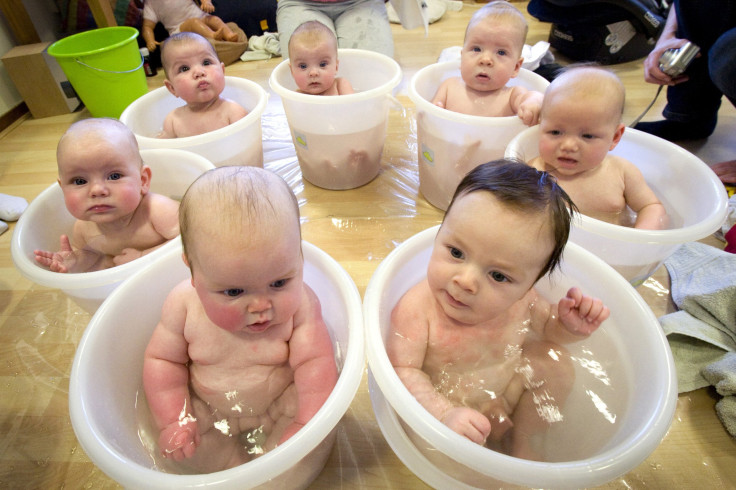How Delivery And Breastfeeding Impact Your Baby's Gut Bacteria And Future Health

Our digestive system is home to nearly 100 trillion bacteria, commonly referred to as our gut microbiome. A new study of 98 Swedish infants over the first year of life finds a connection between the development of each child’s gut microbiome and the way he or she is both delivered and fed. While vaginal delivery meant greater bacterial similarity between mother and child, the decision to breastfeed also impacted the constitution of a baby’s gut microbiome... and so his or her health.
Our gut bacteria make an invaluable contribution to our metabolism by helping us break down complex carbohydrates and starches. These bacteria also play a crucial role in the development of our immune systems and even produce vitamins and hormones that direct the storage of fats. These reasons suggest to scientists that our gut microbiota act as an organ in-and-of themselves. As such, our gut microbiome establishes a foundation for our metabolism and immunity and quite possibly even our behavior.
Taken all together, these bacteria weigh up to four and a quarter pounds and the total number of genes in these various species of bacteria outnumber our human genes. Only since the advent of genetic sequencing technologies has the microbiome more fully revealed itself and its impact on our health.
Crucially, bacteria are said to colonize our gut, with the first residents making the general environment most hospitable to themselves, more hostile to those who come later. How the gut is colonized in our earliest days of life is therefore key to our future health and our future lives.
For the current study, researchers from the University of Gothenburg and the Beijing Genomics Institute-Shenzhen applied metagenomic analysis on fecal samples from 98 Swedish infants and their mothers over their first year of life in order to assess the impact of mode of delivery and feeding on the establishment of the gut microbiota. What they found supported past research in this area.
As suspected, the earliest bacterial colonizers are derived from the mother. Importantly, the microbiome of vaginally delivered infants showed more resemblance to their mothers than C-section babies. However, C-section babies still received some of their mother’s microbes, which passed on through the skin and mouth.
Next, the researchers observed how the population of bacteria shifted depending on what each child ate. The decision to breastfeed or bottle-feed was key, as nutrition is a main driver of infant gut microbiome development. The end of breastfeeding is a key moment in the maturation process of the gut. Certain types of bacteria thrive on the nutrients breast milk provides and once they are no longer available, other bacteria emerge that are more commonly seen in adults.
“Our results strongly suggest that cessation of breastfeeding rather than introduction of solid foods is the major driver in the development of an adult microbiota,” wrote the authors in their conclusion. Bon appetit!
Source: Backhed F, Roswall J, Peng Y, et al. Dynamics and Stabilization of the Human Gut Microbiome during the First Year of Life. Cell Host and Microbe. 2015.



























